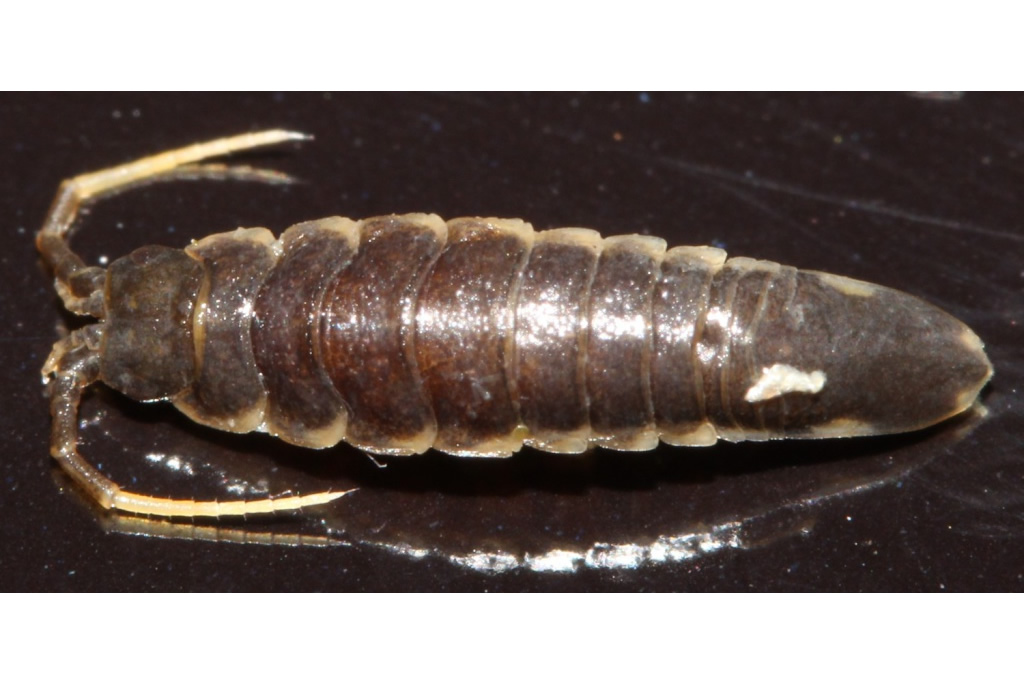Idotea chelipes (Pallas, 1766)
Status:
Native
ID Difficulty
Identification
Idotea are relatively large, conspicuous and common marine isopods with oval or oblong bodies. Although they often have striking colours and patterns, these are not particularly useful for distinguishing between the various species. Rather, identification should be based on characteristics of the antennae, the coxal plates and the pleotelson.
Males of I. chelipes grow up to 15 mm in length, whilst females reach 10 mm. The antennules extend well beyond the third segment of the peduncle of the antennae, whilst the coxal plates are narrow, with only those of pereonites 5 to 7 extending to the rear margin. The pleotelson has subparallel sides, obtuse lateral corners, is slightly keeled towards the rear, and has a single rather rounded medial tip. Mostly greenish or brownish in colour.
Distribution and Habitat
Idotea chelipes is found in brackish habitats, such as in algae in estuaries and stream mouths, and in pools and under stones in mudflats and salt-marsh. It has been recorded on eastern British shores from the Humber southwards, and on southern and western coasts as far north as Shetland. Despite the existence of historical records from Northumberland, Sheader (2000) reported no evidence of I. chelipes there in fieldwork conducted in the 1970s and 1980s, but the species was recorded in north Northumberland in 2023. It has occasionally been recorded on Irish coasts (for further information, see here).
References
Sheader, M. 2000. Isopoda. In J. Foster-Smith (ed.) The Marine Fauna and Flora of the Cullercoats District: Marine Species Records for the North East Coast of England (Volume 1). Sunderland: Penshaw Press.
Naylor, E. & A. Brandt. 2015. Intertidal Marine Isopods. Synopses of the British Fauna (New Series), No. 3. Field Studies Council, for The Linnean Society of London.




